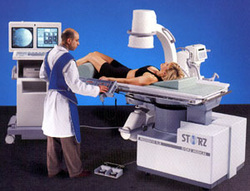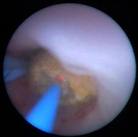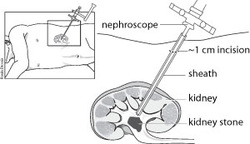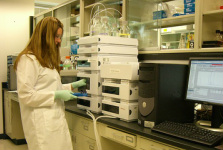Comprehensive Kidney Stone Management
Unfortunately, 5% of the U.S. population will develop kidney stones during their lifetime. Passage of a kidney stone can result in sudden, excruciating pain. Some stones will pass without help, but some will become stuck, or will be too large to pass spontaneously. Fortunately, the physicians at Texas Regional Urology are trained in the latest technology for prompt and effective management of stones. And once the stone is treated, we are able to offer comprehensive metabolic evaluation and managment options to prevent further stone formation.
The method of surgical management will be dictated by the size, location, and composition of the stones. There are three main methods used to treat stones: lithotripsy, ureteroscopy, and percutaneous nephrolithotomy or PCNL.
Lithotripsy

Lithotripsy is the most frequently used procedure for the treatment of kidney stones. In lithotripsy, shock waves that are created outside the body travel through the skin and body tissues until they hit the denser stones. The stones break down into small particles that are easily passed through the urinary tract in the urine. The major benefit of lithotripsy is that it is non-invasive. Lithotripsy is done on an outpatient basis, and recovery time is relatively short; most people can resume normal activities in 1–2 days.
Ureteroscopy

Some stones, due to their size or location, may be better treated with ureteroscopy. In ureteroscopy, a tiny fiber-optic scope is passed through the bladder and up the ureter to the stone. A laser fiber is deployed, and the stone is carefully broken into small fragments. A tiny basket can then be used to extract the stone fragments. Patients often require the temporary placement of a ureteral stent following ureteroscopy.
Percutaneous Nephrolithotomy or PCNL

PCNL is reserved for much larger stones, often larger than a golf ball. In PCNL, the surgeon makes a tiny incision in the back and creates a tunnel directly into the kidney. Using an instrument called a nephroscope, the surgeon locates and removes the stone. A powerful ultrasonic vacuum device is used to pulverize and remove the stone. Often, patients stay in the hospital for a couple of days and may have a small tube called a nephrostomy tube left in the kidney during the healing process.
Metabolic Stone Prevention

After a sucessful clearance of a painful stone, our goal is to prevent any further stones from forming. Our physicians will perform comprehensive chemical analysis of the blood and urine to determine the factors contributing to stone formation. We will review these finding and come up with and individualized plan to prevent further stones. This may involve dietary changes, medication, or mineral supplements. 95% of kidney stones are preventable, and our goal is to help our patients remain pain- and stone-free.
